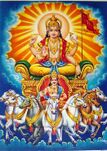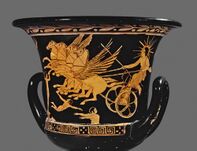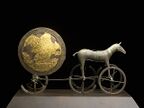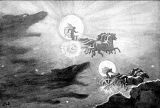Proto-Indo-Europeans
The Proto-Indo-European culture is a hypothetical prehistoric society which is thought to have spoken the Proto-Indo-European language (PIE), the theoretical common ancestor of hundreds of languages native to Eurasia known collectively as the Indo-European (IE) language family.
In the 18th century, European scholars studying the Hindu classics noted a striking affinity in vocabulary and grammar between Sanskrit, Latin, and Ancient Greek, suggesting a common origin. By the 1830s, research into these languages had discovered reliable sound correspondences which allowed for the inclusion of more dissimilar families like the Celtic, Germanic, and Persian languages. Scholars would later add the Albanian, Armenian, and Balto-Slavic branches as well as several extinct languages. At present, the Indo-European hypothesis is one of the best-supported linguistic theories in the field and is considered to constitute the foundation of historical and comparative linguistics.
In addition to linguistic similarities, cultural and linguistic elements in several Indo-European languages show correspondences in religion, mythology, hierarchy, technology, and material culture, allowing for the tentative reconstruction of the cultural complex which may have accompanied such a language in its prehistoric context. The close relationship between language and culture, however, tends to transcend genetic lineage as different groups assimilate with their neighbors or rulers, and a postulated common origin should not be confused with a racial or genealogical affinity. The harmonization of the relevant linguistic, archaeological, and genetic evidence is a continuing problem in Indo-European studies.
Since its discovery in the late 18th century, the Indo-European language hypothesis has inspired conclusions about its significance. The anthropologist Marija Gimbutas claimed that the spread of the Indo-Europeans represented a war of conquest in which warlike, masculine Indo-European society overtook matriarchical, peaceable groups.[1][2] Colin Renfrew, a British archaeologist, connected the expansion of the Indo-European languages with the spread of the Neolithic Revolution from Anatolia and into Europe. Both theories are largely discarded by linguists today.[1] However, the most well-known application of the theory is Aryanism, pioneered by racial theorist Arthur de Gobineau, according to which the Proto-Indo-Europeans constituted a superior race which expanded due to genetic superiority. This theory is best known for its adoption by the National Socialist movement, serving as the barbaric and reactionary superstructure of the revived German war machine.
References
- ↑ 1.0 1.1 Leslie, Jacques (11 Jun 1989). "The Goddess Theory: Controversial UCLA Archeologist Marija Gimbutas Argues That the World Was at Peace When God Was a Woman". Los Angeles Times. Retrieved 23 Aug 2023.
- ↑
Brian, Hayden (2–5 September 1985). Old Europe: Sacred matriarchy or complementary opposition?. First International Conference on Archaeology of the Ancient Mediterranean. University of Malta. pp. 17-?. Retrieved 23 Aug 2023.
{{cite conference}}: CS1 maint: date format (link)
Further reading
- Beekes, R. S. P.; De Vaan, Michiel (2011). Comparative Indo-European linguistics: An introduction. Amsterdam: John Benjamins Pub. Co. ISBN 978-90-272-8500-3. OCLC 767736170.
- Fortson, Benjamin W. (2004). Indo-European language and culture: An introduction. Malden, MA: Blackwell Pub. ISBN 978-1-4051-0315-2. OCLC 54529041.
- Watkins, Calvert (1995). How to Kill a Dragon: Aspects of Indo-European Poetics. New York: Oxford University Press on Demand. ISBN 0-19-508595-7.
- An introduction to "comparative poetics", the study of lyrical and metrical patterns (not merely thematic) which show striking similarities between the various Indo-European traditions.



